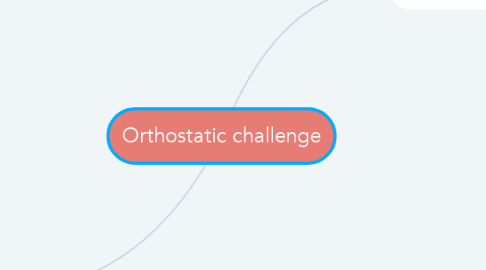
1. Active stand
1.1. Immediate changes
1.1.1. MAP decreases: TPR decreases, CO increases
1.1.1.1. CO: HR increases, SV is maintained
1.1.1.2. Systolic and diastolic pressure decrease
1.1.2. Mechanisms
1.1.2.1. Gravity causes venous pooling in lower extremities
1.1.2.2. Muscle pump activity increases, causing vasodilation (TPR and MAP decrease)
1.2. Long-term responses
1.2.1. MAP increases: TPR increases & returns to normal, CO decreases & returns to normal
1.2.1.1. CO: HR & SV return to normal
1.2.1.2. Systolic and diastolic pressures return to normal
1.2.2. Mechanisms
1.2.2.1. Compensatory response to Increase sympathetic activation which increases vasoconstriction
1.2.2.1.1. TPR and SV increase
1.2.2.1.2. HR also increases, therefore CO increases
1.2.2.2. Baroreceptors detect change in pressure and provide compensatory response
2. Passive tilt
2.1. Immediate changes
2.1.1. MAP is maintained: Insignificant changes to CO and TPR
2.1.2. Systolic and diastolic blood pressures are also maintained
2.1.3. Mechanisms
2.1.3.1. Muscle pump is not activated in the passive tilt, therefore no vasodilation that would cause change in parameters
2.2. Long-term responses
2.2.1. MAP decreases (due to gradual changes in TPR and maintenance of CO)
2.2.2. Systolic and diastolic pressures decrease
2.2.3. Mechanisms
2.2.3.1. Pooling of blood in lower extremities due to gravity but no muscle activation.
2.2.3.2. Compensatory responses by the baroreceptor reflex
